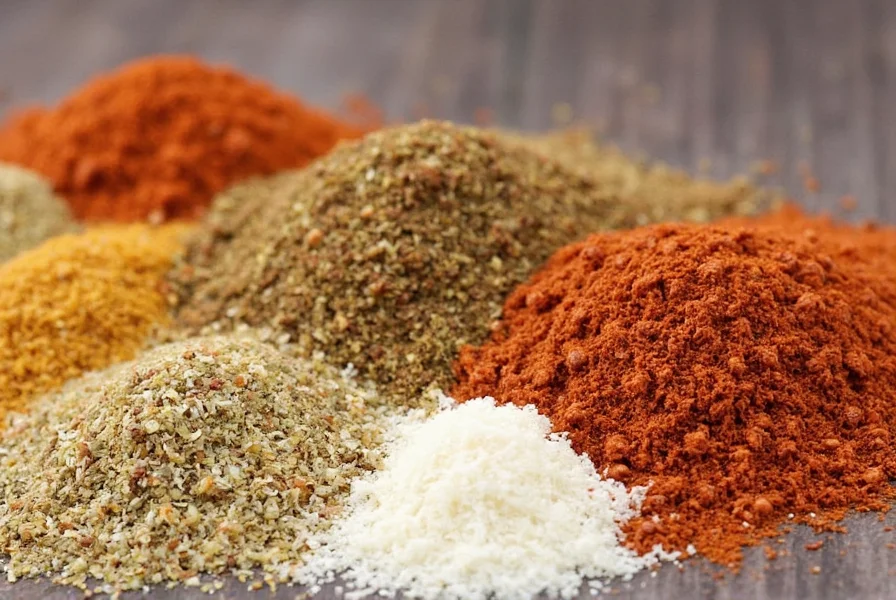Spice Safari: Where in the World Did Cajun Seasoning Come From?
If you've ever bitten into a fiery bowl of gumbo or a plate of spicy jambalaya and thought, 'What is this magic?', chances are you've just tasted the soul of Cajun seasoning. But where did this flavor-packed blend actually come from? Buckle up for a culinary adventure through time, geography, and culture as we dive deep into the origin of Cajun spice, complete with pro tips, fun facts, and a buyer’s guide to bring that Louisiana love home.
Table of Contents
- The Birth of Cajun Spice
- Cajun vs. Creole: What's the Difference?
- What Makes Cajun Seasoning So Spicy Good?
- Buying Guide: Choosing the Best Cajun Seasoning
- Use It Like a Pro: Tips & Tricks
- Final Thoughts
The Birth of Cajun Spice
The story of Cajun seasoning begins not in a fancy lab or a TV kitchen, but on the muddy banks of the Mississippi River — more specifically, in Louisiana. But how did a blend of spices become synonymous with one of America’s most vibrant food cultures?
Let’s rewind to the early 18th century. The Acadians, French-speaking settlers from what is now Nova Scotia (Canada), were expelled by the British in a mass deportation known as the Great Upheaval (Le Grand Dérangement). These displaced people eventually found refuge in the southern swamps of Louisiana. There, they merged their rustic French cooking techniques with local ingredients and available spices, creating something entirely new: Cajun cuisine.
In the absence of gourmet ingredients, Cajun cooks became masters of flavor improvisation. They used what they had: paprika, garlic, onion, cayenne pepper, black pepper, and salt. Over time, these staples evolved into the base of today’s classic Cajun seasoning.
A Taste of Necessity
Cajun seasoning wasn't invented to impress foodies; it was born out of necessity. Before refrigeration, strong flavors helped mask the taste of less-than-fresh ingredients. And since meat often came from wild game or local livestock, bold spices like cayenne and black pepper helped make those dishes palatable and memorable.
Cajun vs. Creole: What’s the Difference?
You’ve probably seen both Cajun and Creole seasoning on the shelf. Are they interchangeable? Not exactly! Here’s how they stack up:
| Feature | Cajun Seasoning | Creole Seasoning |
|---|---|---|
| Origin | Rural Louisiana (Acadian roots) | New Orleans and surrounding areas |
| Main Flavors | Heat-forward, earthy, smoky | Herbaceous, tomato-based, mellow |
| Key Ingredients | Paprika, cayenne, garlic, onion, black pepper | Oregano, thyme, basil, bay leaf, sometimes salt |
| Best For | Gumbos, jambalaya, grilled meats | Seafood stews, pasta sauces, red-sauce dishes |

What Makes Cajun Seasoning So Spicy Good?
The beauty of Cajun seasoning lies in its balance — a little heat, a touch of earthiness, and enough depth to elevate any dish. Let’s break down the stars of the show:
- Paprika: Adds color and mild sweetness.
- Cayenne Pepper: The main source of heat (adjustable based on your preference).
- Garlic Powder: Brings savory richness.
- Onion Powder: Complements garlic with subtle sweetness.
- Black Pepper: Offers sharp bite and warmth.
- Salt: Enhances all other flavors.
Optional additions can include dried herbs like thyme or parsley, or even a hint of citrus zest for brightness.
Buying Guide: Choosing the Best Cajun Seasoning
With so many brands flooding the market, how do you pick the right one for your pantry? Here’s what to look for:
1. Heat Level
- Mild: Ideal for families or spice-sensitive eaters.
- Medium: Balanced heat and flavor — great for everyday use.
- Hot/Extra Hot: For fire lovers who crave serious kick.
2. Salt Content
- Look for low-sodium or salt-free options if you're watching your intake.
- Some blends add fillers like cornstarch or anti-caking agents — check labels carefully.
3. Whole Foods or Organic Options
- Organic blends use pesticide-free ingredients.
- Whole-food-based seasonings often contain real ground peppers and herbs.
4. Brand Comparison Table
| Brand | Heat Level | Salt-Free Option | Organic | Price Range | Best For |
|---|---|---|---|---|---|
| Old Bay Cajun | Medium | No | No | $ | Everyday cooking |
| McCormick Cajun Seasoning | Medium-Hot | Yes | No | $ | Kitchen staple |
| Badia Cajun | Hot | Yes | No | $$ | Grilling & bold dishes |
| Penzey's Cajun | Adjustable (bulk option) | Yes | Yes | $$$ | Specialty chefs |
| Simply Organic Cajun | Medium | Yes | Yes | $$ | Healthy households |
Use It Like a Pro: Tips & Tricks
Ready to take your Cajun game to the next level? Try these clever hacks:
- Rub It In: Use Cajun seasoning as a dry rub for chicken, shrimp, or pork before grilling or baking.
- Add to Marinades: Mix with olive oil, lemon juice, or hot sauce for an instant marinade that packs a punch.
- Boost Soups & Stews: Stir into chowders, gumbos, or chili for extra zing.
- Spice Up Veggies: Toss cauliflower, potatoes, or zucchini in Cajun seasoning and roast until crispy.
- Cocktails & Snacks: Rim Bloody Mary glasses with Cajun salt or sprinkle on popcorn for a bold snack twist.
Final Thoughts
Cajun seasoning isn’t just a condiment — it’s a cultural artifact, a celebration of survival, ingenuity, and flavor. Born from humble beginnings in the bayous of Louisiana, it has grown into a global favorite that adds life to everything from backyard BBQs to gourmet plates.
Whether you’re reaching for a store-bought jar or mixing your own blend at home, remember that Cajun seasoning is all about personalization. Adjust the heat, play with herbs, and don’t be afraid to get creative. After all, that’s what the original Cajun cooks would have done!
Now go forth, season boldly, and savor every bite of that rich, spicy history!










 浙公网安备
33010002000092号
浙公网安备
33010002000092号 浙B2-20120091-4
浙B2-20120091-4